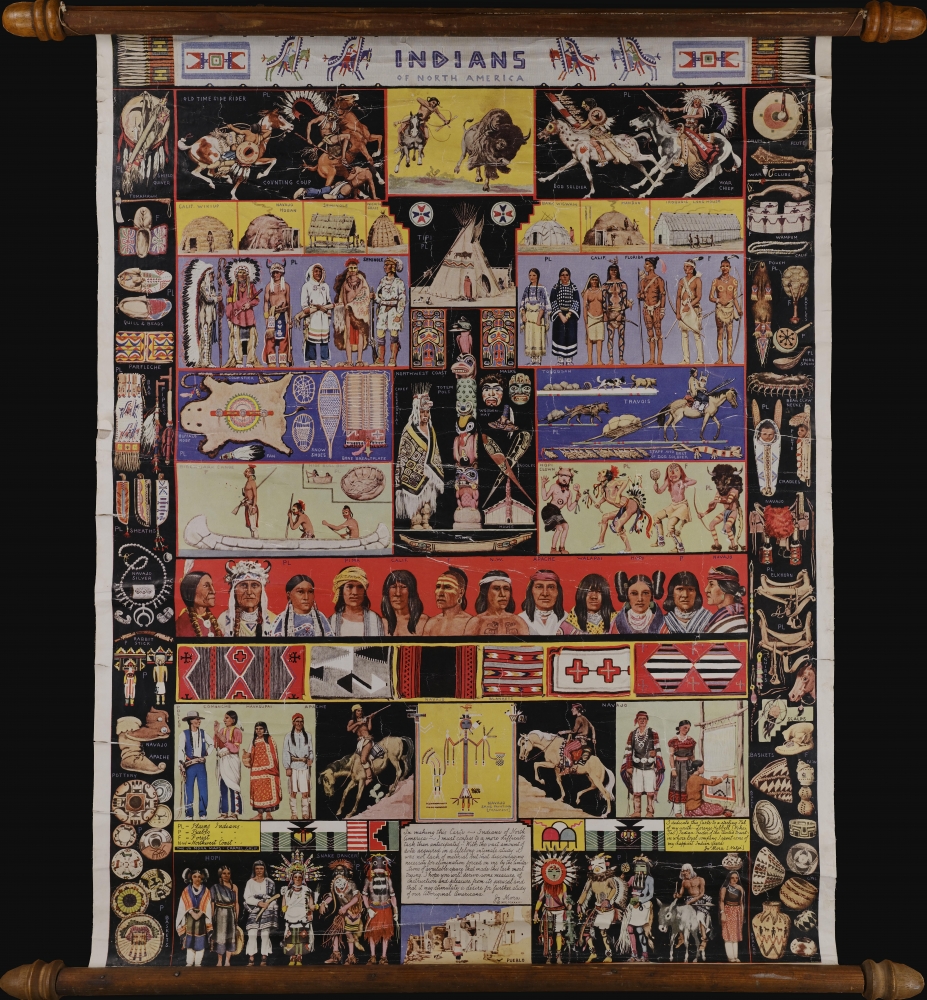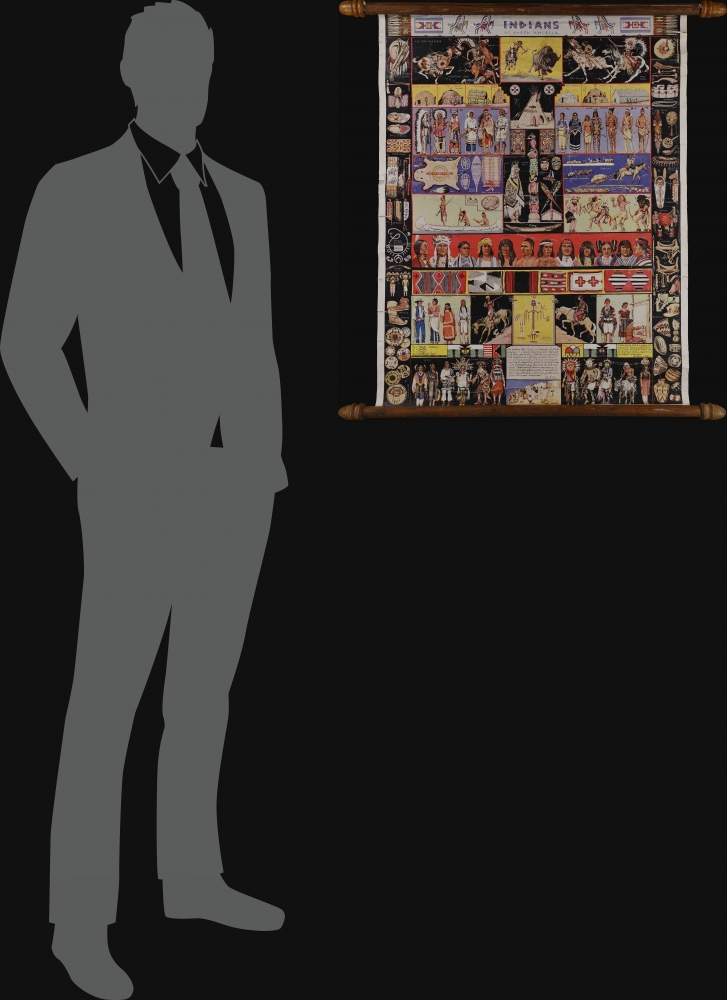1936 Jo Mora Vignettes of Native American Life
AmericanIndians-mora-1936
Title
1936 (dated) 31 x 24 in (78.74 x 60.96 cm)
Description
A Closer Look
A series of vignettes take up this 'carte,' depicting Native American dress, material culture, art, religious life, and more. At top, scenes of horseback buffalo hunts and the 'counting coup,' whereby a soldier can defeat an enemy without killing him, are illustrated. A strong but not exclusive emphasis is placed on peoples of the western part of North America, including Hopi, Apache, and Navajo. A key towards bottom-left notes abbreviations which are employed throughout. Mora lived among the Hopi and Navajo in the early 20th century, producing photographs and paintings that are among his earliest artistic output. He maintained an interest in Native American culture throughout the remainder of his career.Publication History and Census
This set of vignettes was published by Jo Mora in Carmel, California in 1936. It is cataloged among the holdings of the University of California Berkeley, the University of Arizona, the University of Texas at Arlington, the New York Public Library, Brigham Young University, the Wichita Public Library, and the Buffalo and Erie County Public Library. The present example is rather atypical in being mounted on linen and connected to rollers.Cartographer
Joseph 'Jo' Jancito Mora (October 22, 1876 – October 10, 1947) was an Uruguayan born artist active in California during the first half of the 20th century. Mora immigrated to California as a young man. He studied art in Boston and, after graduating, worked there briefly before relocating to California. In cartographic circles Mora is known for pioneering the 20th century pictorial map. In a series he referred to as his 'cartes,' published between in 1926 and 1942, Mora developed a pictorial style that combined cartography with colorful cartoonish image of local figures, folklore, history, and natural wonders. His earliest maps were commissioned by the Hotel Del Monte and included California's Playground and The Seventeen Mile Drive. As he matured as a cartographer, his work became increasingly dense, often packed with tiny figures, each expressive of some aspect of regional life. Mora, often called the 'Renaissance man of the West' also worked as an illustrator, muralist, sculptor, photographer, and writer. His masterpiece is considered to be the Father Serra Cenotaph, a bronze and marble sculpture at the Memorial Chapel in El Carmelo Mission, Carmel, California. His map work included Monterey Penninsula (1927), and Seventeen Mile Drive (1927), California (1927), Grand Canyon (1931), Yosemite (1931), Yellowstone (1936), Carmel-By-The-Sea (1942), California (1945) (large and small versions), Map of Los Angeles (1942), among others. More by this mapmaker...




